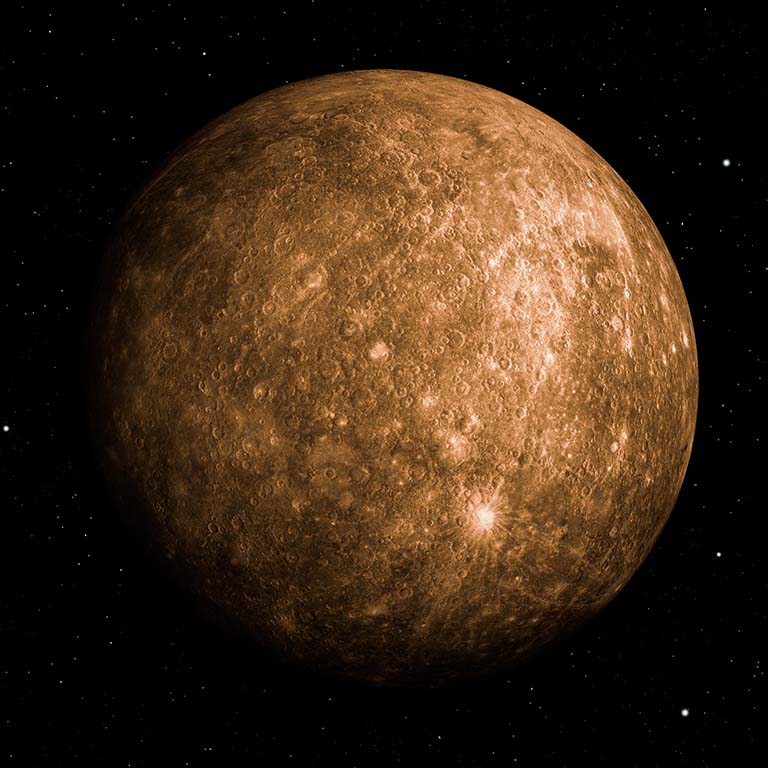For immediate release: December 1, 2021
BLOOMINGTON, Ind. -- Venus, Saturn, and Jupiter will be on display in the evening sky soon after sunset at the start of December.
Venus will be the first planet to appear, low in the southwest. Easy to spot at first, it will sink slowly into the twilight after mid-month.
As Venus gets lower, Mercury will rise out of the sunset glare to meet it. The two planets will appear closest on Dec. 28, when they will be 4 degrees apart. By New Year's Eve, Mercury will be 1 degree higher than Venus.
Much fainter Saturn will join Venus as the evening sky darkens. They will be closest on Dec. 16 when they will be 14 degrees apart. Saturn will be in the constellation Capricornus all month.
Jupiter will start December in the eastern part of Capricornus, about 16 degrees east of Saturn. The huge planet will be a fine sight in a telescope as twilight falls and for the first hour or so after dark. By month's end Jupiter will set by 9 p.m.
Mars will be in the morning sky in December, rising nearly two hours before the sun. Look for It low in the southeast as twilight begins. On the morning of Dec. 25 the Red Planet will be 5 degrees north of the similarly red star Antares, which will be brighter.
Meteor shower
The Geminid meteor shower will be active between Dec. 4 and 17, peaking on the night of Dec. 13-14. The moon's light will interfere until it sets around 3 a.m. local time. In a clear dark sky the maximum rate might be more than 100 meteors per hour, but the rate this time will be much lower. The "shooting stars" will seem to radiate from the constellation Gemini, which will be nearly overhead by 1 a.m. for North American viewers. The best display will be between 11 p.m. and 4 a.m.
Solstice
The sun will reach the December solstice on Dec. 21 at 11 a.m. EST, marking the start of winter in the Northern Hemisphere and summer in the Southern Hemisphere. For the next six months in the Northern Hemisphere the days will be getting longer.
Moon
The moon will be new on Dec. 4, at first quarter on Dec. 11, full on Dec. 19, and at last quarter on Dec. 27.
Author: Hal Kibbey Email: hkibbey [at] gmail.com


 The College of Arts
The College of Arts